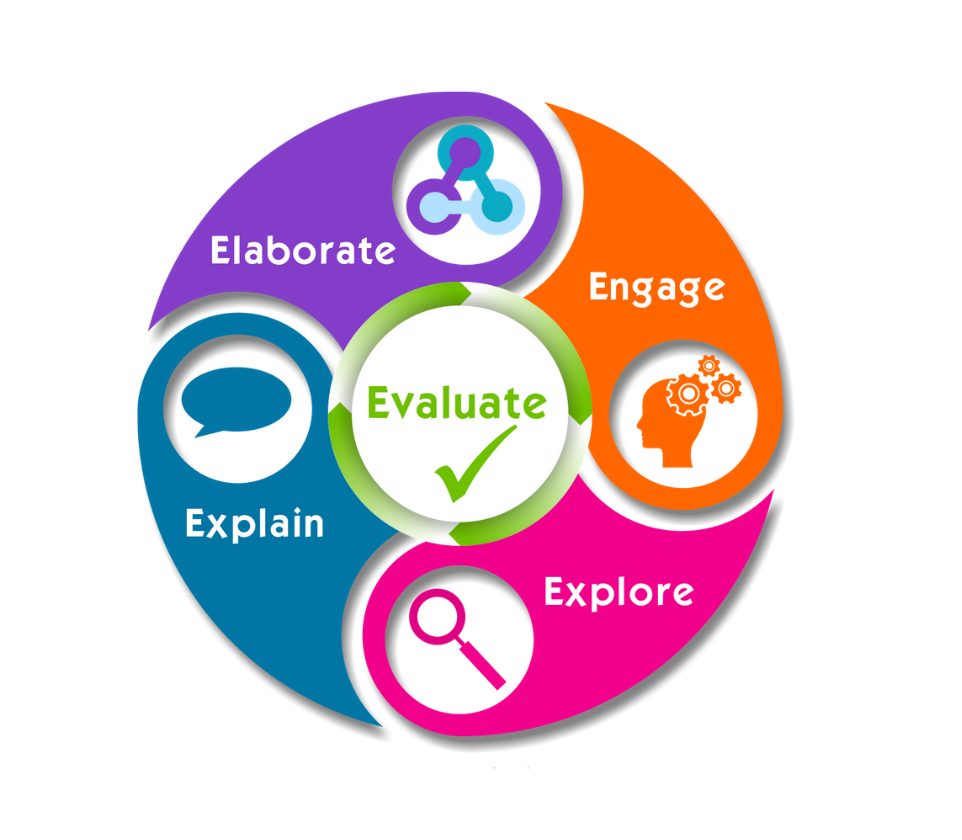
What is the 5E instructional model?
This model describes a five-stage teaching sequence that can be used for entire programs, specific units and individual lessons.
NASA eClips™ resources integrate the 5E constructivist learning cycle, helping students build their own understanding from experiences and new ideas. This model is the work originally for the Biological Sciences Curriculum Study (BSCS). It has a growing research base and can be used within integration, Problem-based Learning (PBL), Project-based Learning (PjBL), and Universal Design for Learning (UDL).
ENGAGE: The purpose for the ENGAGE stage is to pique student interest and get them personally involved in the lesson, while pre-assessing prior understanding.
During this experience, students first encounter and identify the instructional task. During the ENGAGE stage, students make connections between past and present learning experiences, setting the organizational groundwork for upcoming activities. NASA eClips™ are designed to ENGAGE students. Through discussions, the videos may be used to uncover students’ prior understanding. The video format arouses students’ curiosity and encourages them to ask their own questions.

EXPLORE: The purpose for the EXPLORE stage is to get students involved in the topic, providing them with a chance to build their own understanding.
In the EXPLORATION stage the students have the opportunity to get directly involved with phenomena and materials. As they work together in teams, students build a set of common experiences which prompts sharing and communicating. The teacher acts as a facilitator, providing materials and guiding the students' focus. The students' inquiry process drives the instruction during an exploration. Students are actively learning through inquiry-based science instruction and engineering challenges. Emphasis is placed on: questioning, data analysis and dritical thinking. NASA eClips™ help students EXPLORE new topics on their own. Through self-designed or guided exploration students make hypotheses, test their own predictions, and draw their own conclusions.
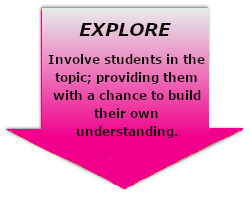
EXPLAIN: The purpose for the EXPLAIN stage is to provide students with an opportunity to communicate what they have learned so far and figure out what it means.
EXPLAIN is the stage at which learners begin to communicate what they have learned. Language provides motivation for sequencing events into a logical format. Communication occurs between peers, with the facilitator, and through the reflective process. Once students build their own understanding, they may use NASA eClips™ videos to help summarize or EXPLAIN their own ideas. These segments introduce vocabulary in context and correct or redirect misconceptions.
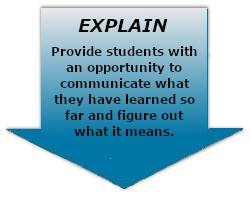
ELABORATE: The purpose for the ELABORATE stage is to allow students to use their new knowledge and continue to explore its implications.
At this stage students expand on the concepts they have learned, make connections to other related concepts, and apply their understandings to the world around them in new ways. NASA eClips™ segments help students ELABORATE and apply what they learned to new and unfamiliar situations.
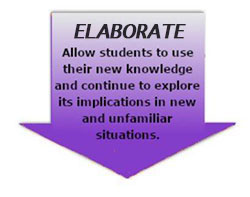
EVALUATE: The purpose for the EVALUATION stage is for both students and teachers to determine how much learning and understanding has taken place.
EVALUATE, the final "E", is an on-going diagnostic process that allows the teacher to determine if the learner has attained understanding of concepts and knowledge. Evaluation and assessment can occur at all points along the continuum of the instructional process. Some of the tools that assist in this diagnostic process are: rubrics, teacher observation, student interviews, portfolios, project, and problem-based learning products. Video segments can be used to determine students’ depth of understanding. Students will be excited to demonstrate their understanding through journals, drawings, models and performance tasks.
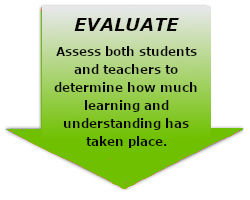


 Recent tweets from NASA eClips
Recent tweets from NASA eClips

